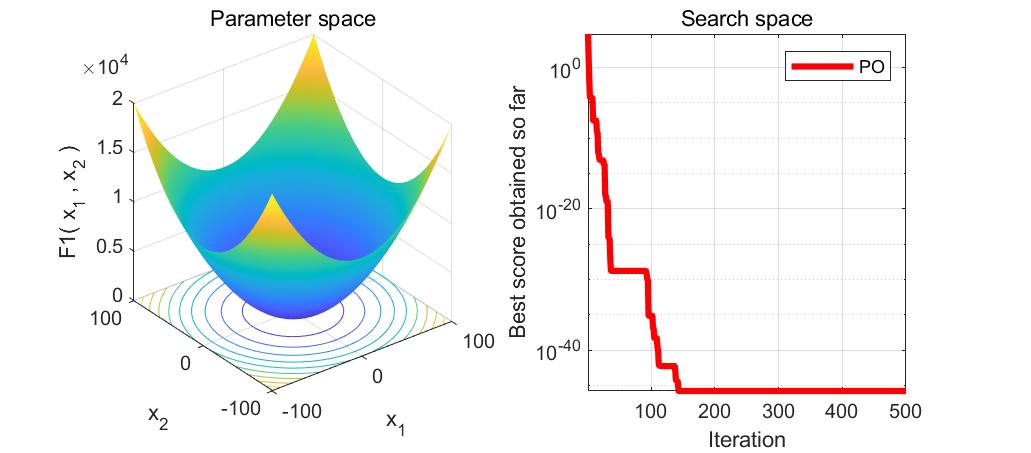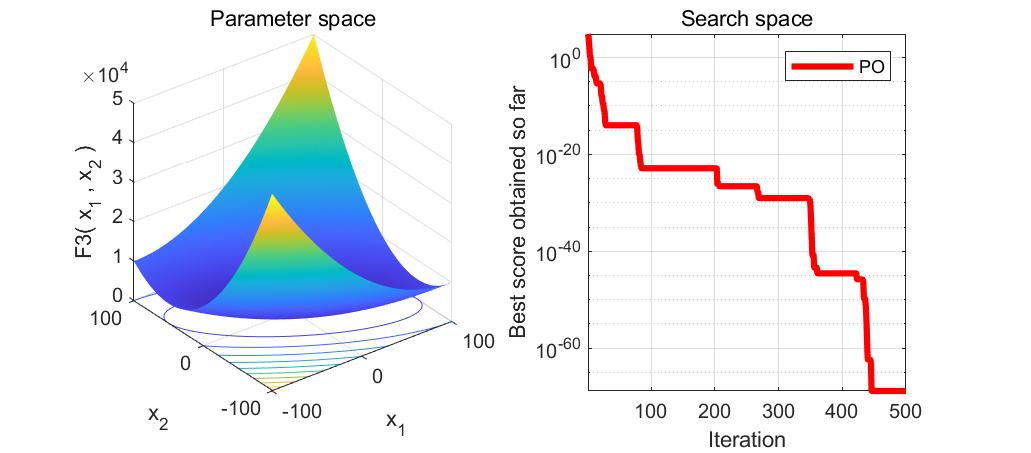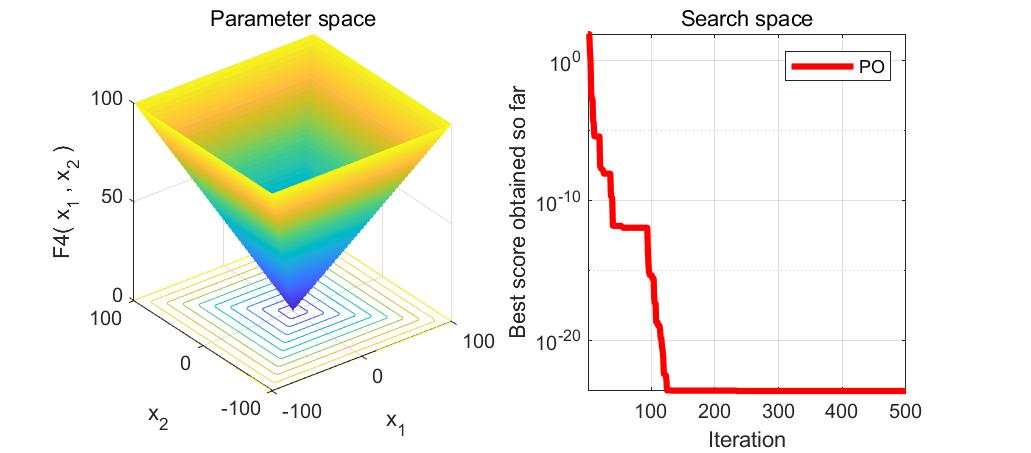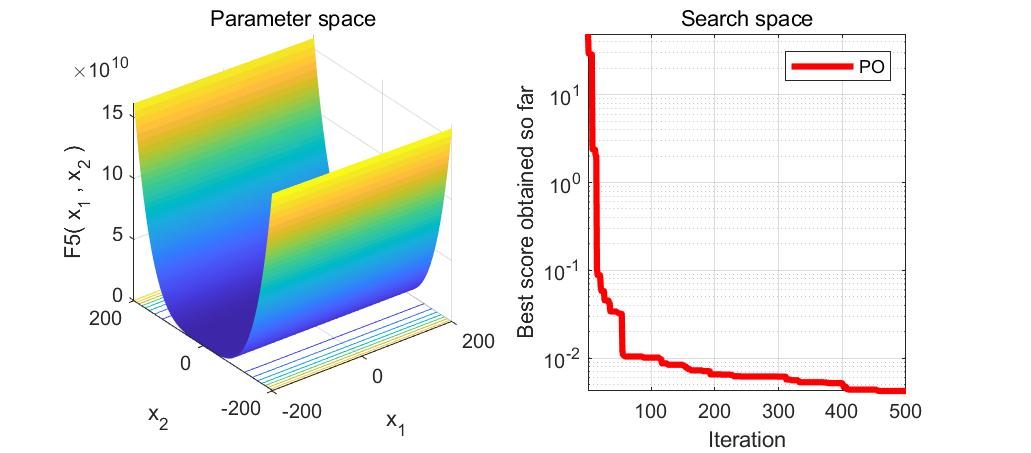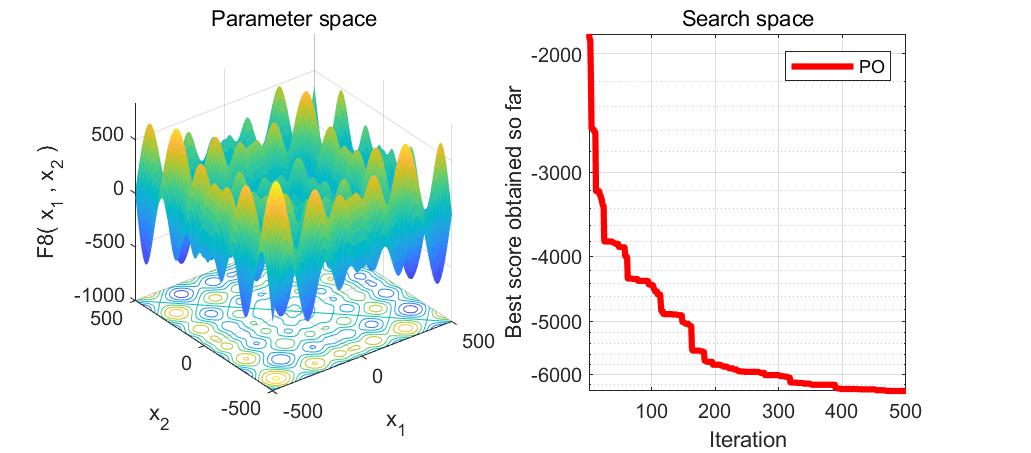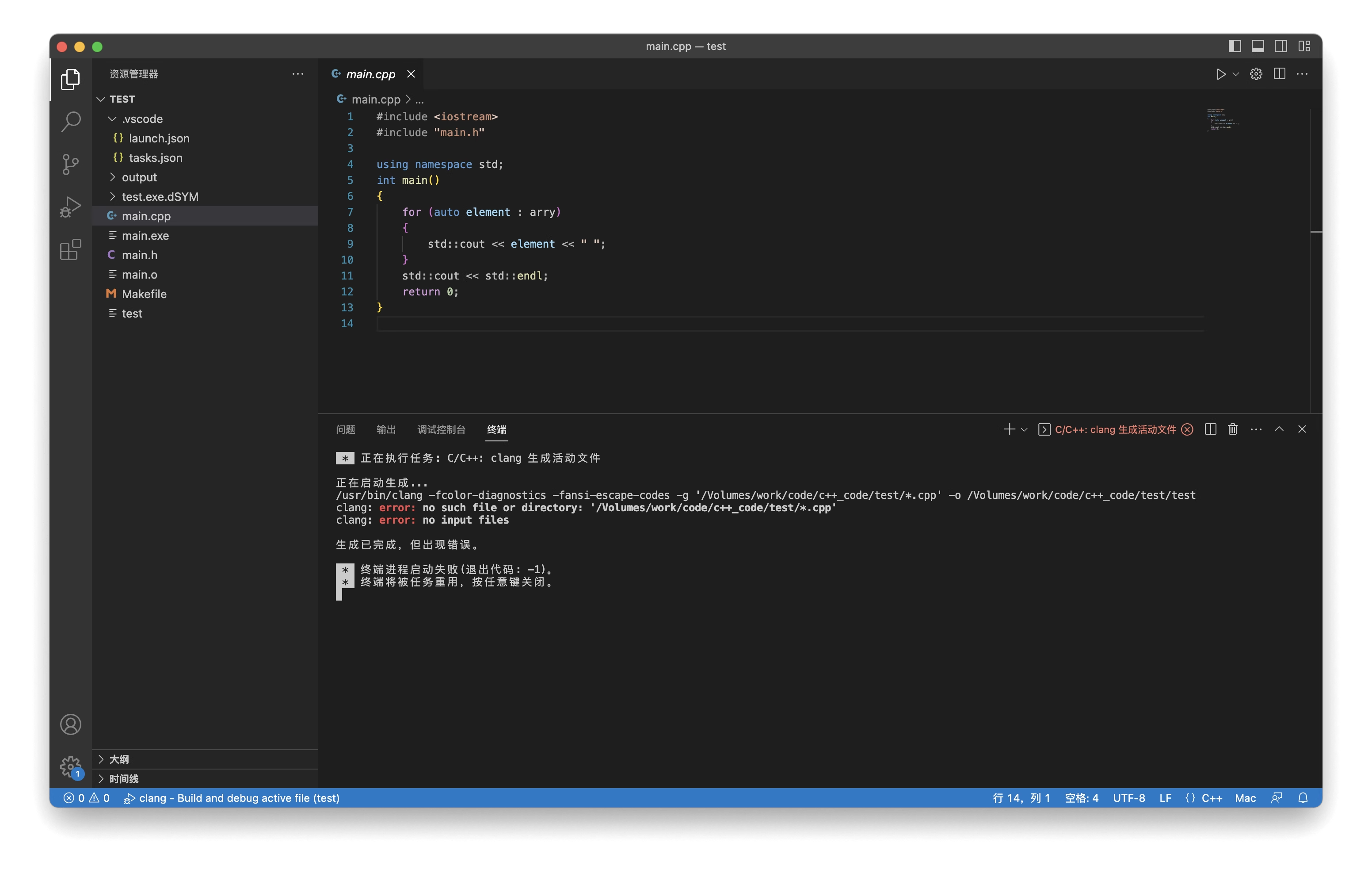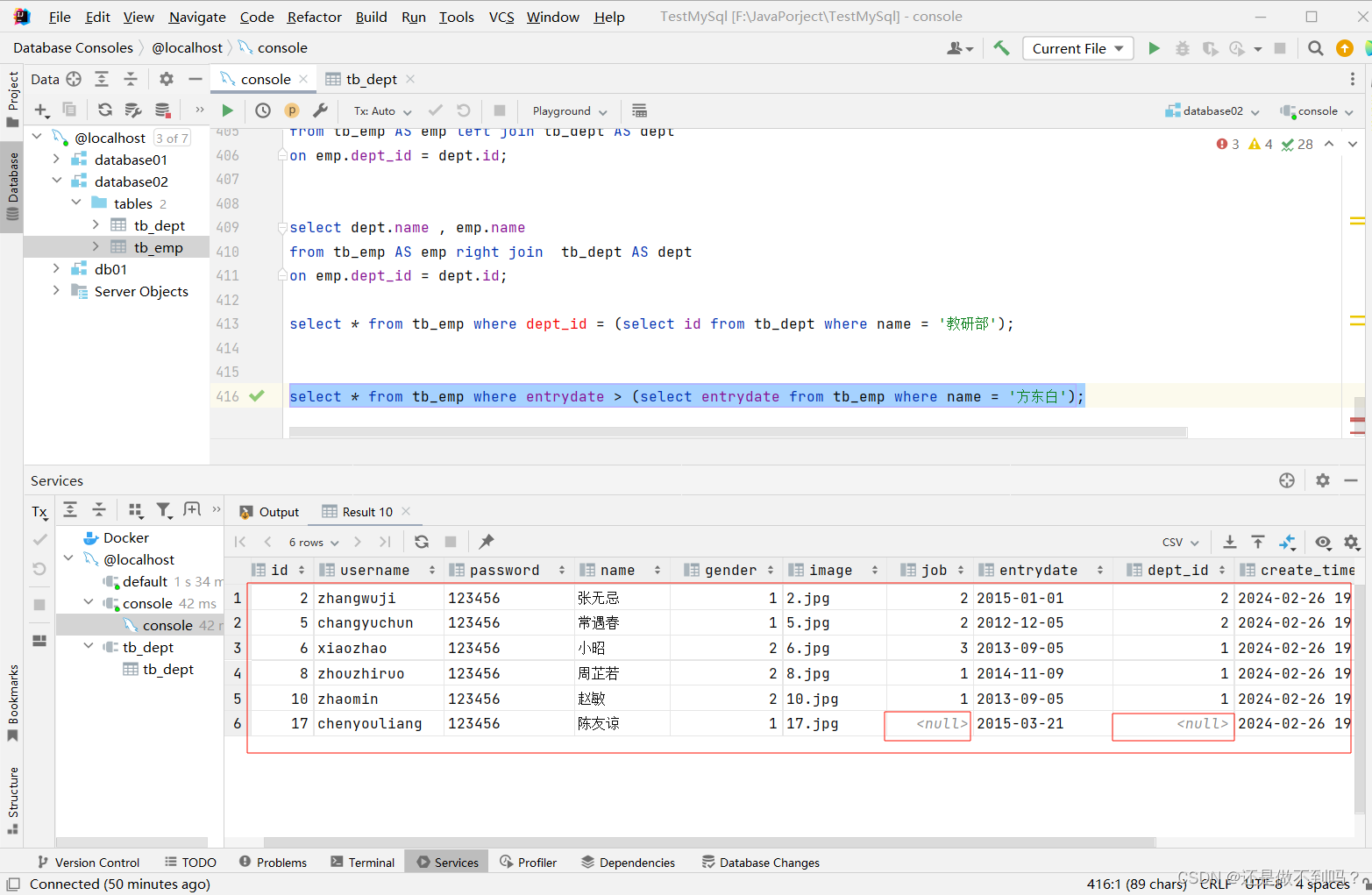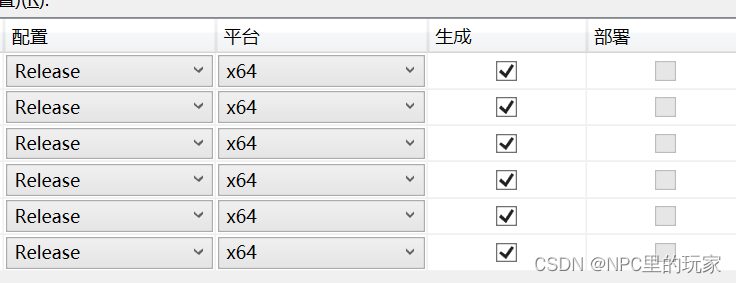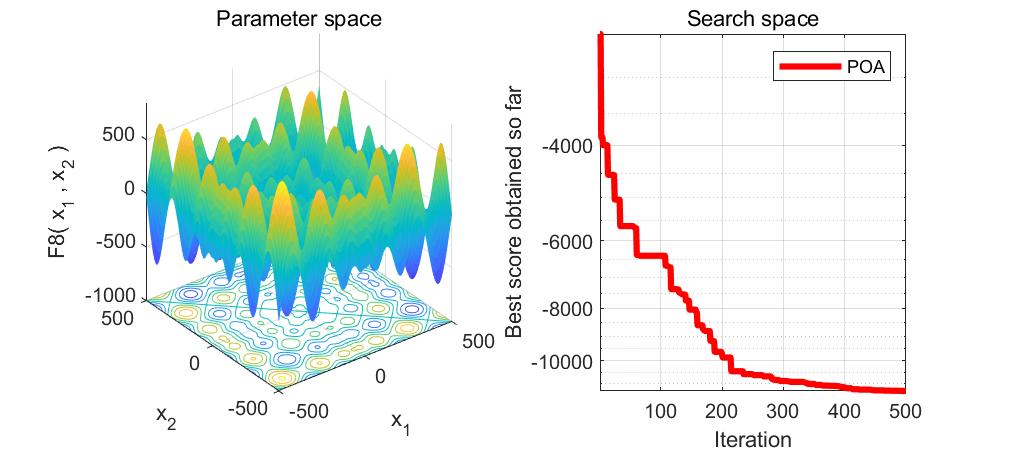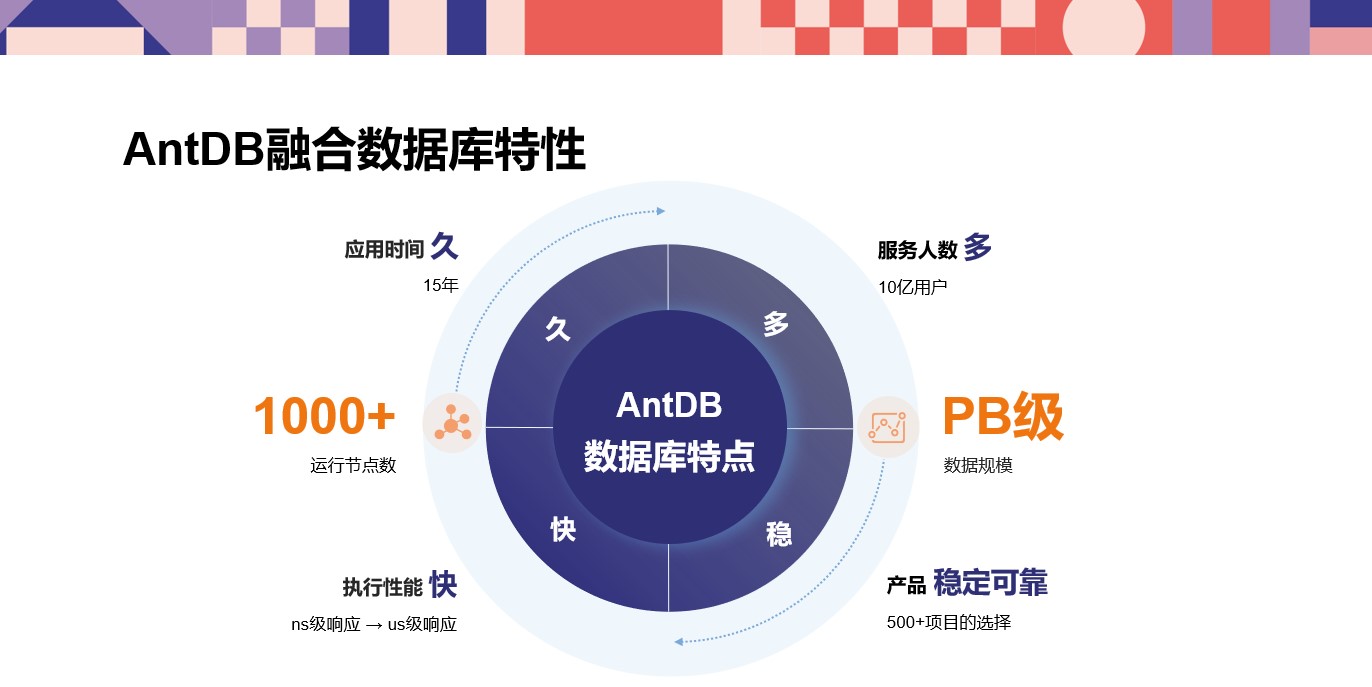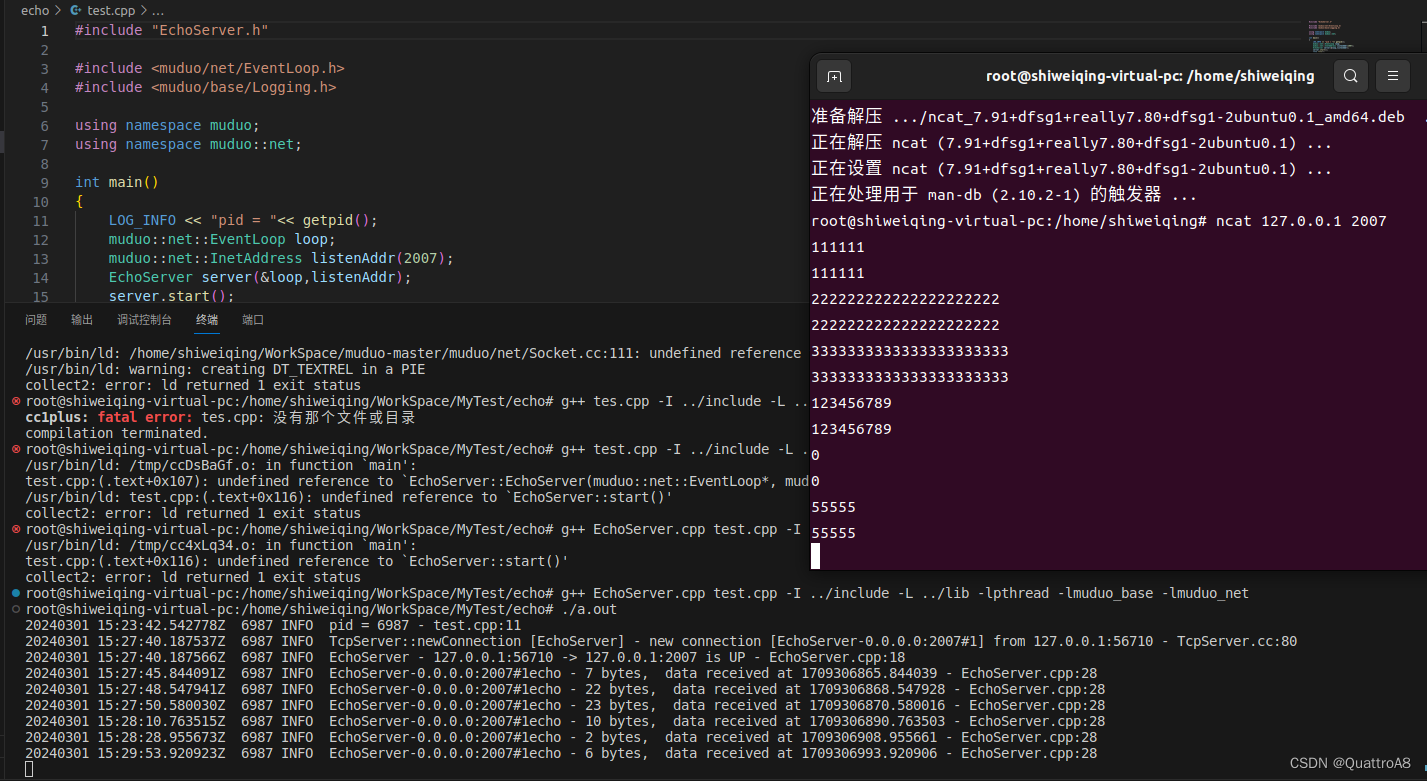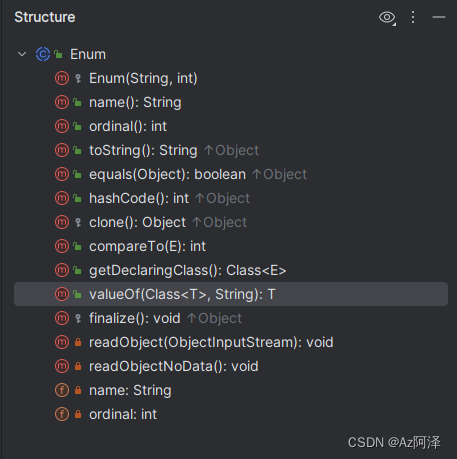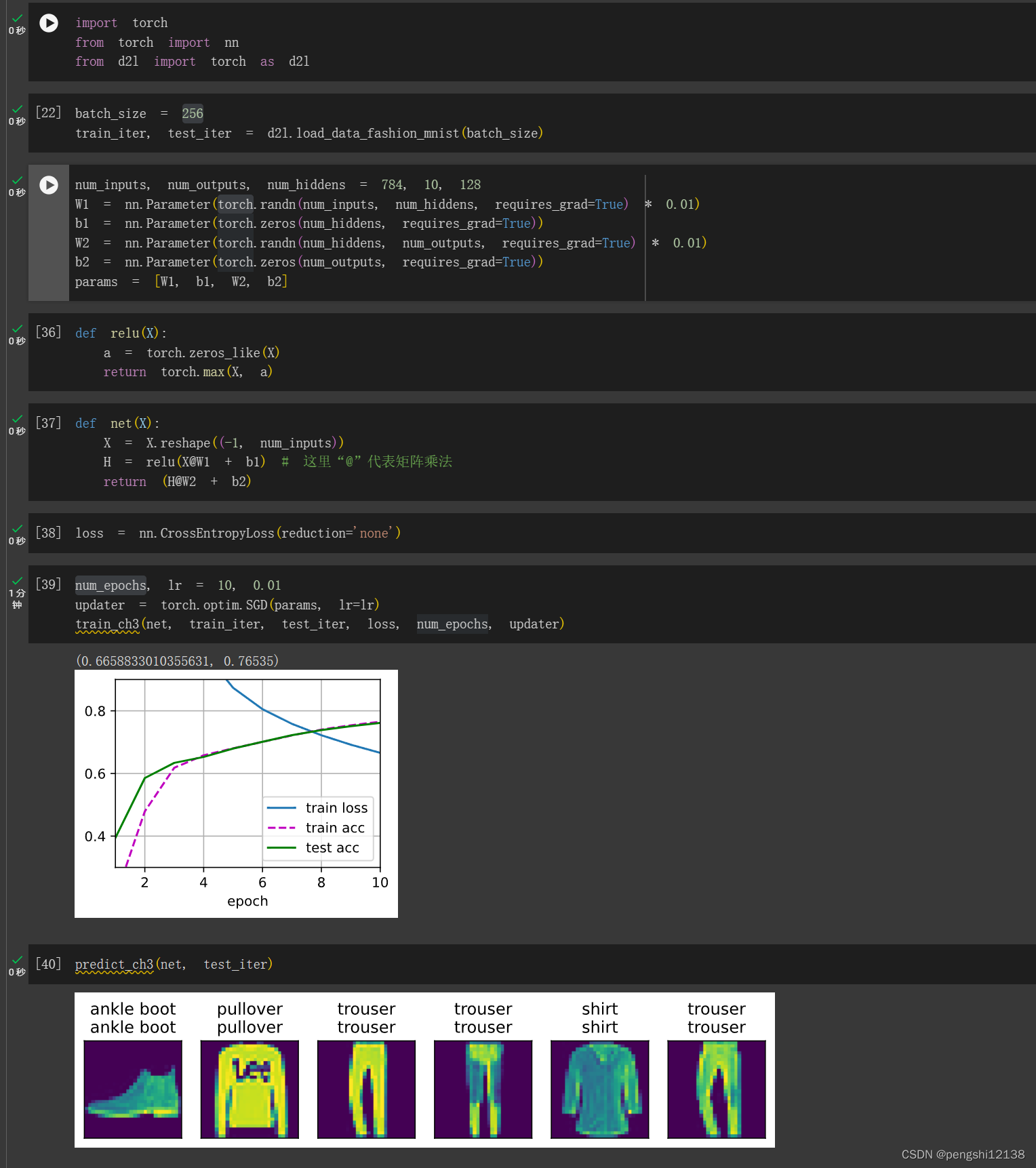一、鹦鹉优化算法
鹦鹉优化算法(Parrot optimizer,PO)由Junbo Lian等人于2024年提出的一种高效的元启发式算法,该算法从驯养的鹦鹉中观察到的觅食、停留、交流和对陌生人行为的恐惧中汲取灵感。这些行为被封装在四个不同的公式中,以促进寻找最佳解决方案。与遵循单独探索和开发阶段的传统元启发式算法相比,PO 群体中的每个个体在每次迭代期间都会随机表现出这四种行为中的一种。这种方法更恰当地表示了在驯化鹦鹉中观察到的行为随机性,并显着增强了种群多样性。通过偏离传统的勘探-开采两阶段结构,PO有效地降低了被困在局部最优值中的风险,同时保持了解决方案的质量。PO的随机结构使其与传统算法区分开来,使其特别适合避免局部最优,并适用于现实世界的问题解决,特别是在医学领域。

参考文献:
[1]Lian, Junbo, et al. “Parrot Optimizer: Algorithm and Applications to Medical Problems.” Computers in Biology and Medicine, Elsevier BV, Feb. 2024, p. 108064, doi:10.1016/j.compbiomed.2024.108064.
二、23个函数介绍

参考文献:
[1] Yao X, Liu Y, Lin G M. Evolutionary programming made faster[J]. IEEE transactions on evolutionary computation, 1999, 3(2):82-102.
三、PO求解23个函数
3.1部分代码
close all ;
clear
clc
Npop=30;
Function_name='F1'; % Name of the test function that can be from F1 to F23 (
Tmax=300;
[lb,ub,dim,fobj]=Get_Functions_details(Function_name);
[Best_fit,Best_pos,Convergence_curve]=PO(Npop,Tmax,lb,ub,dim,fobj);
figure('Position',[100 100 660 290])
%Draw search space
subplot(1,2,1);
func_plot(Function_name);
title('Parameter space')
xlabel('x_1');
ylabel('x_2');
zlabel([Function_name,'( x_1 , x_2 )'])
%Draw objective space
subplot(1,2,2);
semilogy(Convergence_curve,'Color','r','linewidth',3)
title('Search space')
xlabel('Iteration');
ylabel('Best score obtained so far');
axis tight
grid on
box on
legend('PO')
saveas(gca,[Function_name '.jpg']);
display(['The best solution is ', num2str(Best_pos)]);
display(['The best fitness value is ', num2str(Best_fit)]);
3.2部分结果
